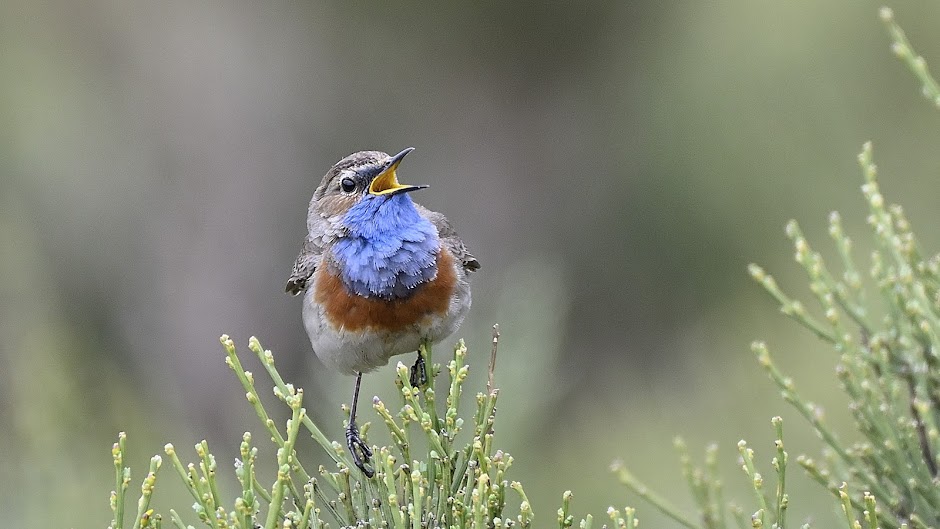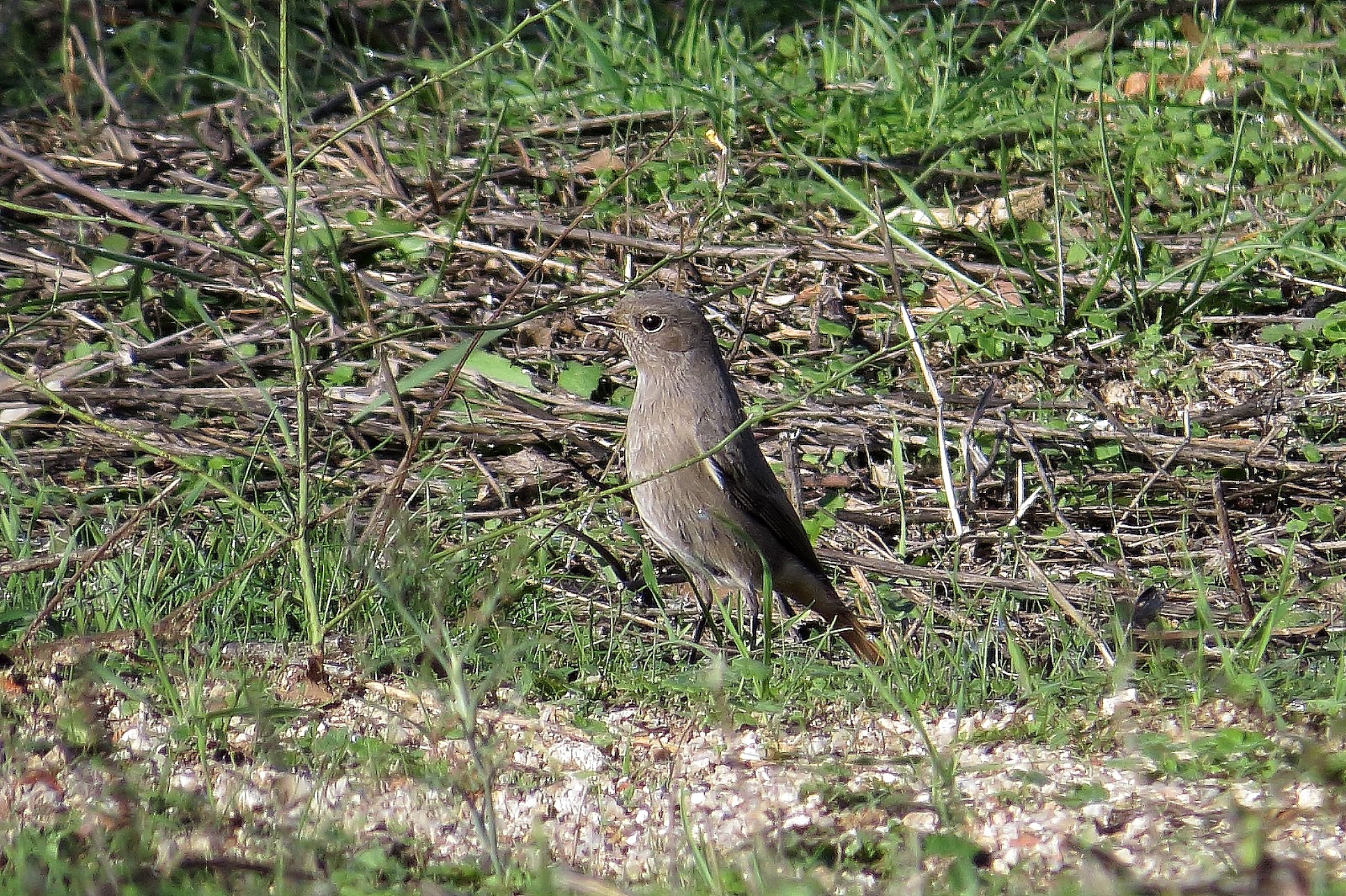Hola otra vez.
Hello again.
En esta ocasión os voy a mostrar alguna de las aves que vimos en una excursión por la Comunidad de Madrid de un día.
On this occasion I will show some of the birds we saw on a day tour by the Community of Madrid.
El tiempo fue muy bueno y caluroso para esta época del año.
The weather was very good and warm for this time of year.
Primero fuimos a El Pardo para ver si veíamos rapaces diurnas. La verdad es que no pudo estar más flojo, yo creo que la peor visita que he hecho a este maravilloso lugar aunque pudo ser debido a las elevadas temperaturas que tuvimos.
First we went to El Pardo to see if we could spot Diurnal Raptors. The truth is that it was frustrating, I think it was the worst visit I have made to this wonderful place but could be due to the high temperatures we had.
Un grupo de verdecillos (Serinus
serinus).
A flock of European Serin.
Las totovías (Lullula
arborea) nos entretuvieron con su bonito canto.
The Wood Larks entertained us with their beautiful sing.
Colirrojo tizón (Phoenicurus
ochruros).
Black
Redstart.
Zorzal charlo (Turdus
viscivorus).
Mistle
Thrush.
Como no veíamos ni tan siquiera buitres decidí ir a otro lugar para probar suerte. En nuestro camino se cruzó un águila imperial ibérica (Aquila
adalberti). Como íbamos en autopista no pude detenerme para contemplarla con detenimiento. Una pena.
As we did not see nor even vultures I decided to go elsewhere. On our way a Spanish Imperial Eagle crossed. As we were on the highway I could not stop to contemplate it carefully. A shame.
Ya en nuestro destino vimos varias tarabillas europeas (Saxicola rubicola).
Already in our destiny we saw several Common
Stonechat.
Y los deseados buitres leonados (Gyps
fulvus).
And the desired Griffon Vultures.
Y al poco rato los buitres negros (Aegypius
monachus).
And shortly after the Monk Vultures.
Después de disfrutar de los buitres y los milanos reales (Milvus
milvus) nos acercamos al embalse de Santillana. El nivel del embalse estaba bastante bajo para la observación de aves. En la foto un somormujo lavanco (Podiceps
cristatus).
After enjoying Vultures and Red Kites we got to Santillana Reservoir. The reservoir level was too low for birding. In the photo a Great Crested Grebe.
Garza real (Ardea
cinerea).
Grey Heron.
Gaviota reidora (Chroicocephalus
ridibundus).
Black-headed
Gull.
Antes de finalizar el recorrido en la estepa decidí pasarnos por unos roquedos a ver si teníamos suerte y podíamos ver roqueros solitarios (Monticola
solitarius). En la foto uno de los machos.
Before ending the tour in the steppe I decided to pass by a rocky area to see if we were lucky and could spot some Blue Rock Thrush. In the pic one of the males.
Otro macho de roquero solitarioo (Monticola solitarius).
Another male of Blue Rock Thrush.
Una bonita hembra.
A beautiful female.
La sorpresa nos la dio este Torcecuello euroasiático (Jynx torquilla). Me extrañó verle a finales de octubre.
The surprise was given by this Eurasian Wryneck (Jynx torquilla). I was surprised to see it in late October.
Muy difícil de fotografiar pues no paraba quieto mucho tiempo.
Very difficult to photograph because it never stop too long in the same place.
Escribano montesino (Emberiza
cia).
Rock
Bunting.
Aviones roqueros (Ptyonoprogne
rupestris).
Crag
Martins.
Collalba negra (Oenanthe
leucura).
Black
Wheatear.
Una hembra.
A female.
Cada vez que aparecían en la zona los roqueros solitarios (Monticola solitarius) las collalbas negras (Oenanthe leucura) las perseguían incesantemente hasta que conseguían expulsarlos.
Each time that appeared the Blue Rock Thrushes in the area the Black Wheatears chasing them incessantly until they managed to expel them.
En el Valle del Jarama pudimos disfrutar de muchas avutardas comunes (Otis
tarda). También vimos 3 sisones comunes (Tetrax
tetrax) aunque muy lejos para sacarles fotos.
In the Jarama Valley we enjoyed many Great Bustards. We also saw 3 Little bustards but too far to take pictures.
Cernícalo vulgar (Falco
tinnunculus).
Common
Kestrel.
Estornino pinto (Sturnus
vulgaris).
Common Starling.
Entre los estorninos pintos (Sturnus vulgaris) estaban estos dos estorninos negros (Sturnus
unicolor).
Between these Common Starlings there were two Spotless Starlings.
Me sorprende ver con que facilidad vuelan las avutardas comunes (Otis tarda) aunque debido al calor que hacía iban con el pico abierto. Es el ave de mayor peso que vuela en la Península Ibérica.
It amazes me how easily fly the great bustards but due to the heat they went with its beak open. It's the heaviest bird that flies in the Iberian Peninsula.
Y con la imagen de esta magnifica ave en vuelo me despido de todos vosotros hasta la próxima entrada.
And with the image of this magnificent bird in flight I leave you all till next post.











































Hola, Luis. No quiero destriparte el negocio, pero las Collalbas negras las viste por la zona de Patones ¿no?
ResponderEliminarMuchas gracias.
Benjamín.
Hola Benjamín,
EliminarLas vi cerca de Patones como bien dices aunque cuando yo voy a un restaurante no se me ocurre pedir la receta al cocinero, Jejejejejeje.
Por el momento me bastan los ingredientes. La receta intentaré improvisarla, ja, ja...
EliminarMuchas gracias, Luis.
Gracias Benjamín, espero que te salga bien el cocido. Saludos.
Eliminar